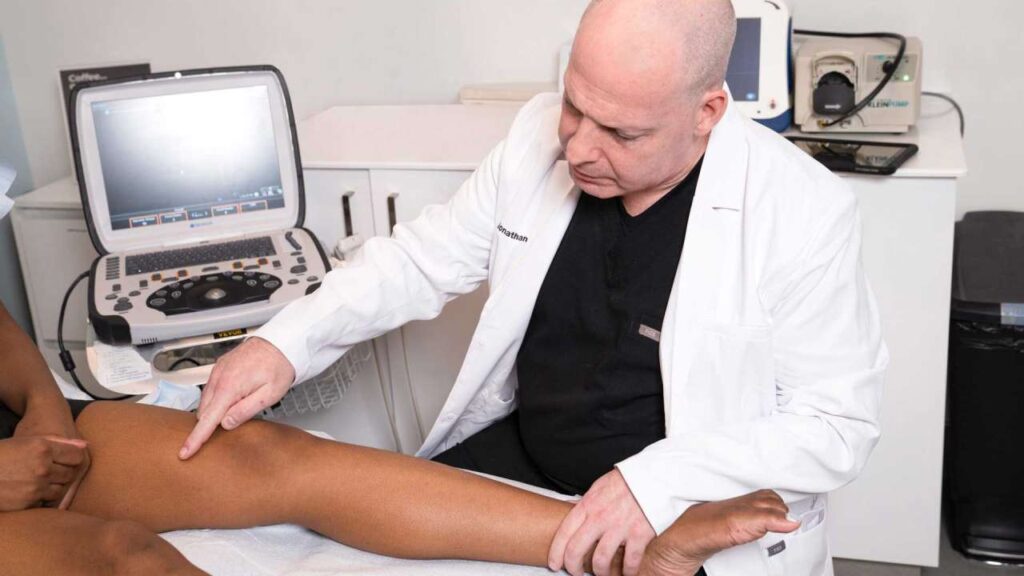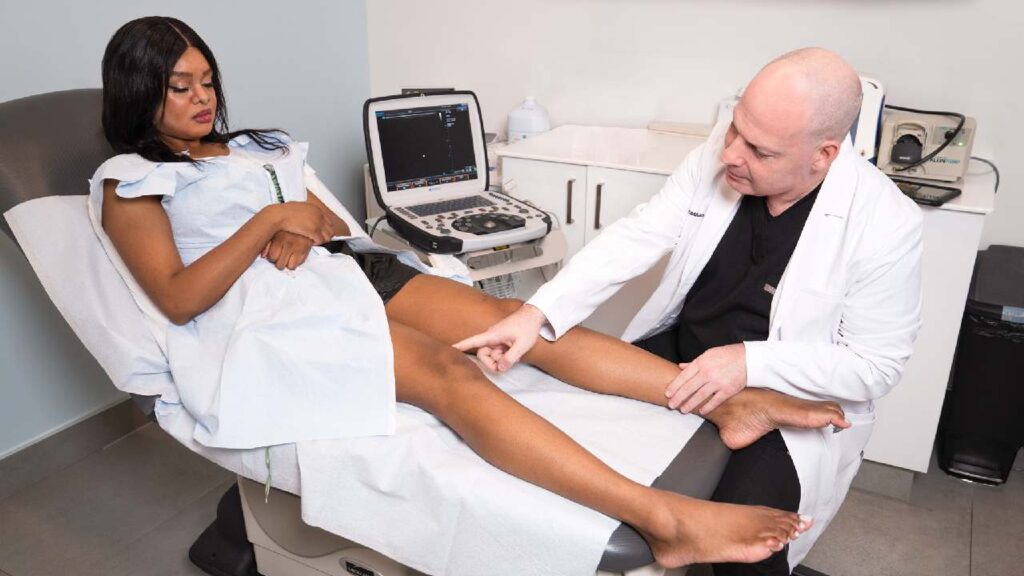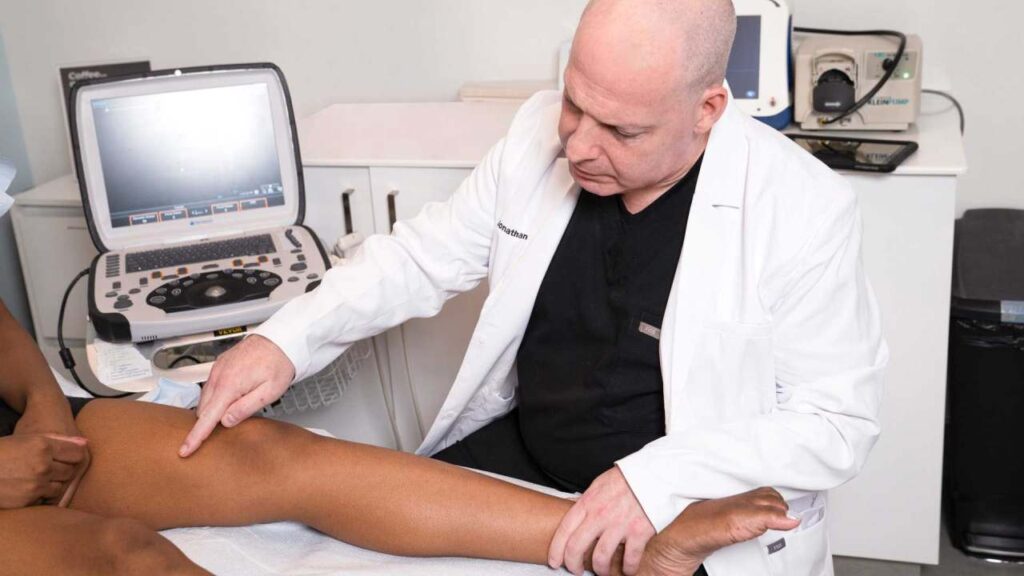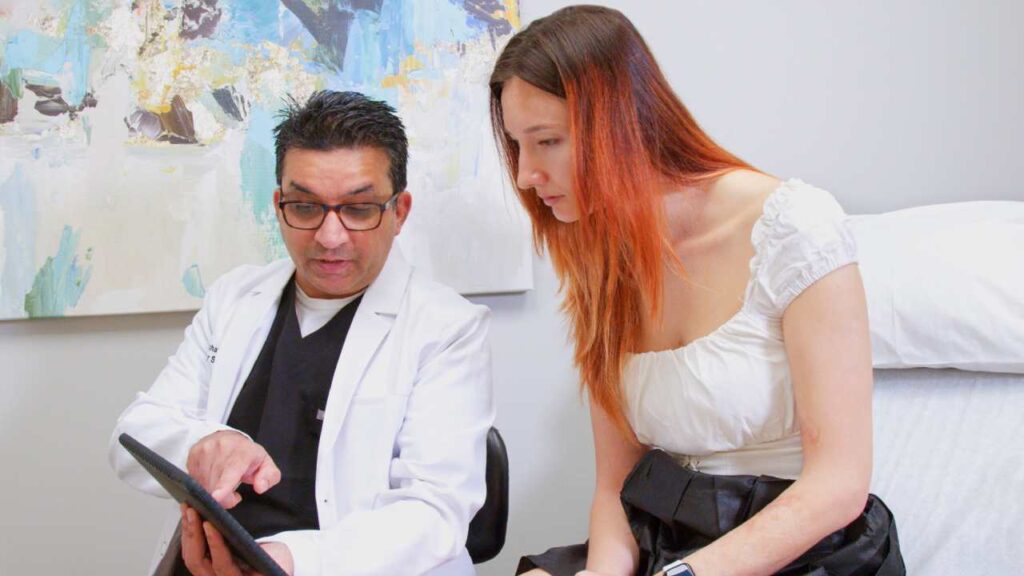Choosing where to look for vein care can be difficult, so a good place to start is by evaluating the treatment options provided by the vein center. At Vein Treatment Clinic New York, you can be sure to expect state-of-the-art, minimally-invasive treatment from excellent doctors. Click HERE to book an appointment at our excellent vein center, or keep reading to learn more about vein treatment options at a vein center in Manhattan.
What are minimally-invasive vein treatments?
Treatment for spider and varicose veins used to exclusively be through surgical procedures, but biomedical science innovation has made it possible to treat varicose veins and spider veins through minimally-invasive treatments. Rather than a long surgery with an even longer hospital stay, minimally-invasive procedures take about an hour and only require a small incision to perform the procedure. This often means that minimally-invasive procedures have a lower risk, shorter procedural time, and less recovery time after leaving the vein center.
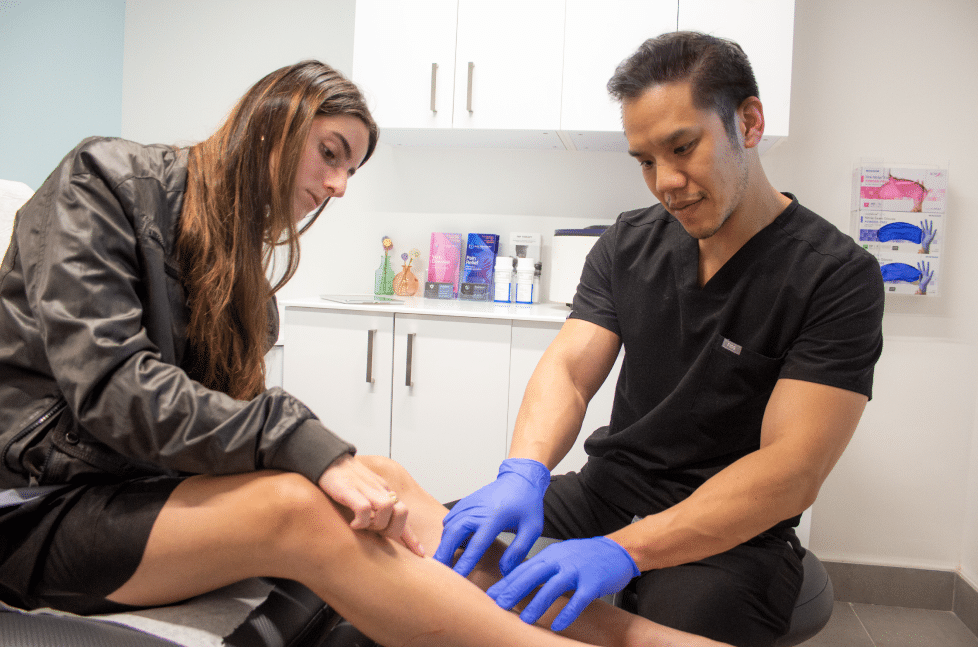
What conditions do minimally-invasive procedures address?
Chronic venous insufficiency (CVI), which is the root cause of many vein conditions, can be treated with minimally invasive procedures.
Like the name implies, it is ongoing, or chronic, insufficient blood flow through the veins. One-way valves in leg veins allow blood to flow through the heart while preventing it from returning to the limbs. When these valves in the legs begin to leak, blood flows downward and pools in veins near the feet, resulting in venous insufficiency.
This built-up fluid can cause the veins in the legs to bulge out, which is more commonly known as varicose veins. Varicose veins are enlarged blood vessels that appear dark purple, green, blue, or red in color. Spider veins are smaller but more visible on the skin, and they are web-like, as the name suggests, and are commonly found on the lower limbs.
What minimally-invasive treatment options do I have?
There are many minimally-invasive treatment options available, so when you make an appointment at a vein treatment center, the vein doctor will conduct an evaluation and determine the best treatment plan for you. Let’s explore some of these minimally-invasive treatment options now!
1. Sclerotherapy
A vein specialist uses tiny needles to inject a drug called a sclerosant into damaged veins during a sclerotherapy procedure. This medication irritates the vein wall linings, causing them to adhere together and block the vein, allowing blood to be rerouted to healthy veins.
Varithena, a sclerotherapy foam injected into a damaged saphenous vein by a vein doctor to lessen the appearance and symptoms of large and often painful varicose veins, is a new type of sclerosant that has shown excellent results. This procedure, like the previous one, closes off the affected veins and then reroutes blood supply. It takes less than an hour at a vein treatment center and has little to no recovery time.
2. VenaSeal
VenaSeal is a vein glue used to seal the saphenous vein in the leg, a common source of varicose veins. The doctor first places the adhesive in the damaged vein using a small catheter, then applies a bit of pressure to help the vein seal. Within seconds, the VenaSeal adhesive seals the diseased vein, and the blood is naturally rerouted into the healthy veins of your legs, reducing the appearance of bulging varicose veins. A bandage is applied to cover the site of application, and you will be on your way!
3. Radiofrequency Ablation
Vein ablation is a procedure that uses energy to seal off varicose veins. There are several types of ablation used to treat spider and varicose veins, but our doctors recommend radiofrequency ablation, as it is safe and does not require recovery time.
After administering a local anesthetic, the vein doctor will use ultrasound imaging to direct a small catheter to the weakened vein, where it will be triggered to administer thermal energy to the vein walls, effectively shutting them down. This treatment, which redirects blood flow to healthier veins to increase circulation, has a 97 percent success rate and is immediately effective.
Which minimally-invasive treatment should I go for?
A vein specialist at a vein treatment center will decide which minimally invasive therapy you will undergo after inspecting your large and small saphenous veins for valve obstructions or injuries. As a result of these vein problems, blood can flow the wrong way and not reach all parts of the body as efficiently as it should. Then the vein doctor will build an individualized recovery plan and advise you on the finest best care options for your unique case.
In almost all instances, they will recommend a minimally invasive technique, because they know that these treatment options are safest for you as the patient. Set up an appointment at the Vein Treatment Center in New York for vein treatment today!
